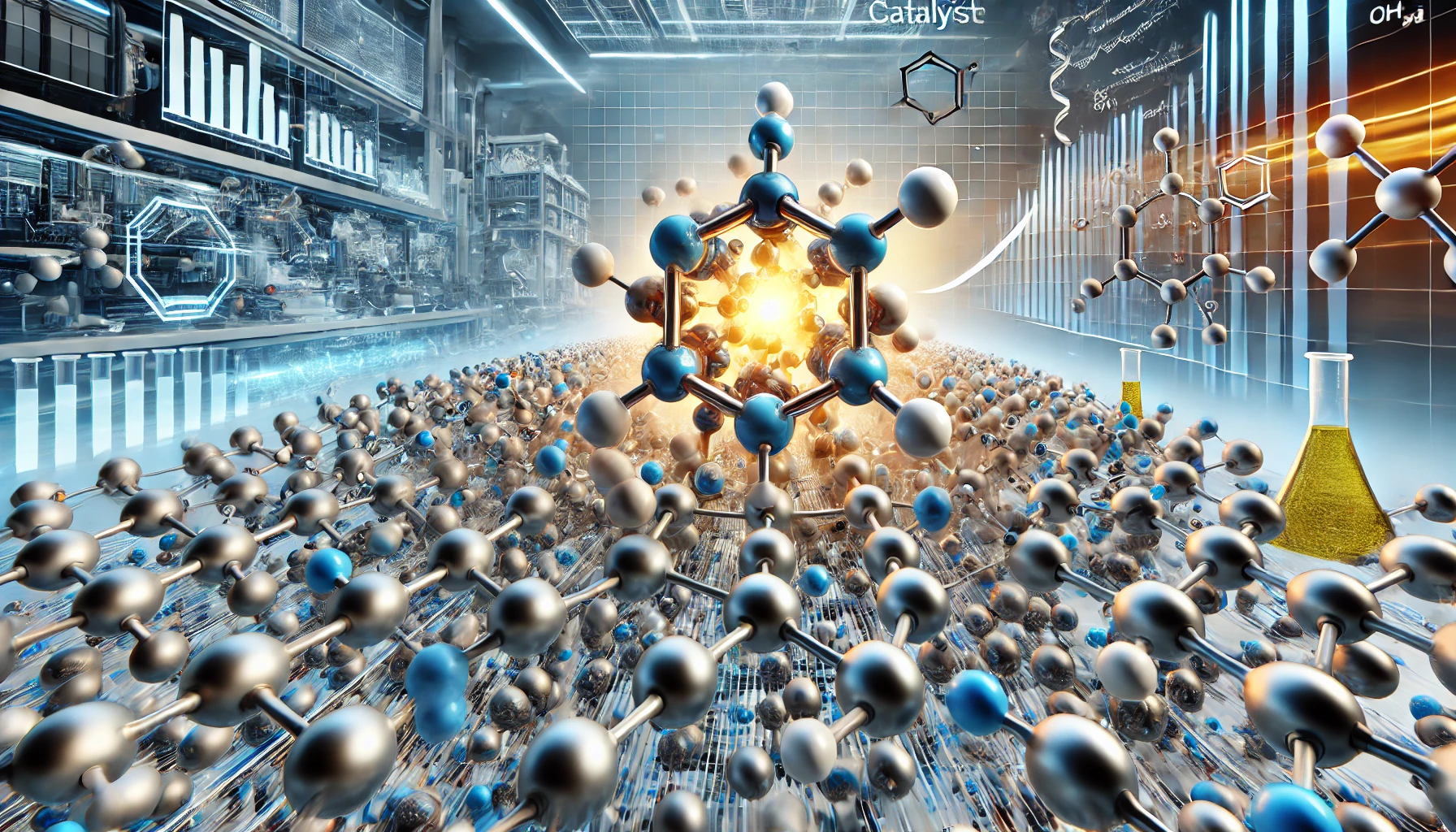A catalyst is an important entity that catalyzes chemical reactions without any permanent change. It assists in achieving this by lowering the activation energy to speed up the reaction process efficiently.
It has been very simplistic in the world of chemistry to understand how a catalyst works. Be it in the industry, biological or day-to-day life, catalysts speed up the process and save energy. Catalysts are necessary for everything from fuel to medicines. Catalytic applications have now changed many industries-increasing productivity while promoting sustainability.
- Chemical reaction catalyst: Catalyze reactions in chemical reactions to give less amount of activation energy.
- Biological catalysts: Enzymes, vital for bodily functions.
- Industrial processes largely depend on catalysts to be cost-effective.
Catalysts may not be used up when undergoing a reaction; however, they can be reused over and over. Their addition does not affect the end product but significantly accelerates the reaction. It makes them very crucial in large-scale industrial processes especially when working with time and energy. Catalysts come with applications in such diversified industries as environmental solutions and food production.
How Catalysts Work
The catalyst works by providing an alternative path to the reaction, which is relatively energy poor. It allows the reaction to happen at a faster rate, and most importantly, can be used many times. It is in this ability that catalysts are unique and therefore so important for them to speed up chemical reactions without themselves undergoing any change.
Types of Catalysts
Catalysts can broadly be classified into two: homogeneous and heterogeneous. The knowledge of these types is important for designing the appropriate catalyst for any application.
- Homogeneous catalysts are in the same phase as that of the reactants.
- Heterogeneous catalysts exist in a different phase than the reactants.
Various catalysts have their own merits, and they are applied in various chemical as well as industrial procedures. Generally, homogeneous catalysts are carried out in solutions most of the time, whereas heterogeneous catalysts are taken in solid-state reactions most of the time.
Applications of Catalysts
Catalysts have many applications in different fields. They are of great importance in the pharmaceutical, energy, and environmental industries. In biological applications, enzymes happen to be natural catalysts speeding up metabolic processes important to life.
Industrial Applications
- Refining petroleum: Catalytic processes play a vital role in petroleum refining.
- Chemical industries: Catalytic processes are used in the production of many vital chemicals such as fertilizers and polymers.
- Environmental applications: Catalysts help reduce the harmful emissions from cars and industries.
Catalysts further assist in the reduction of the energy resources employed, thereby rendering the operation more environmentally friendly. To illustrate, in the synthesis of ammonia for fertilizers, catalysts are employed to lower the temperature and pressure of the reaction.
Use of Catalysts in Daily Life
Catalysts, other than those found in industries, also exist in everyday life; they are essential in biological processes. Biological catalysts, such as enzymes speed up the digestive process, allowing the body to absorb nutrients much better. If not for enzymes, many processes in the body would be too slow to support living.
Biological Catalysts
Enzymes are natural catalysts in the human system.
Metabolic reactions rely on enzymes to occur at a speed that is fast enough to be part of life.
Medical catalysts help in the synthesis of drugs
Biological catalysts are essential in health and well-being. Studies on the functioning of these catalysts in medicine led to the formulation of medicines and treatments that enhance and manipulate biochemical reactions in the organism.
Future of Catalysts
The future of catalysts appears bright, especially with the development of nanotechnology and green chemistry. Catalyst innovations are those that are more efficient or more environmentally friendly. Such innovations can change entire industries: the processes will be faster, cheaper, and cleaner.
Important Innovations
Nanocatalysts
The surface area and reactivity of catalysts are much greater, making it faster and more efficient in reaction.
Green catalysts
A focus on waste and energy consumption occurs in industrial processes.Due to these needs for greener and environment-friendly solutions, such catalysts should play an increased role. Continued research is very excellent and an avenue for developing catalysts that might fill gaps left by the existing ones while facing the challenges presented by modern industries.
Conclusion
A catalyst is much more than an accelerating substance in chemical reactions. It seems to be a key constituent within all industries and biology, permitting processes that would otherwise take too much time or consume too much energy. From oil refining and medicine manufacture to support for life in the form of enzymes, catalysts are an essential factor. As science continues to move forward through technology, catalysts will play a much greater role in the future and shape the way toward a more environmentally friendly, more energetic, and therefore more resourceful future.
| Catalyst UPSC Notes |
| 1. A catalyst speeds up chemical reactions by lowering the activation energy without being consumed in the process. 2. Catalysts are classified into homogeneous (same phase as reactants) and heterogeneous (different phase from reactants). 3. Enzymes are biological catalysts that accelerate metabolic processes in living organisms, essential for life. 4. Industrial applications of catalysts include refining petroleum, chemical manufacturing, and reducing emissions in environmental processes. 5. New innovations like nanocatalysts and green catalysts focus on increasing efficiency and sustainability in various industries. 6. Catalysts are vital in both everyday biological processes and large-scale industrial applications, supporting efficiency and sustainability. |


